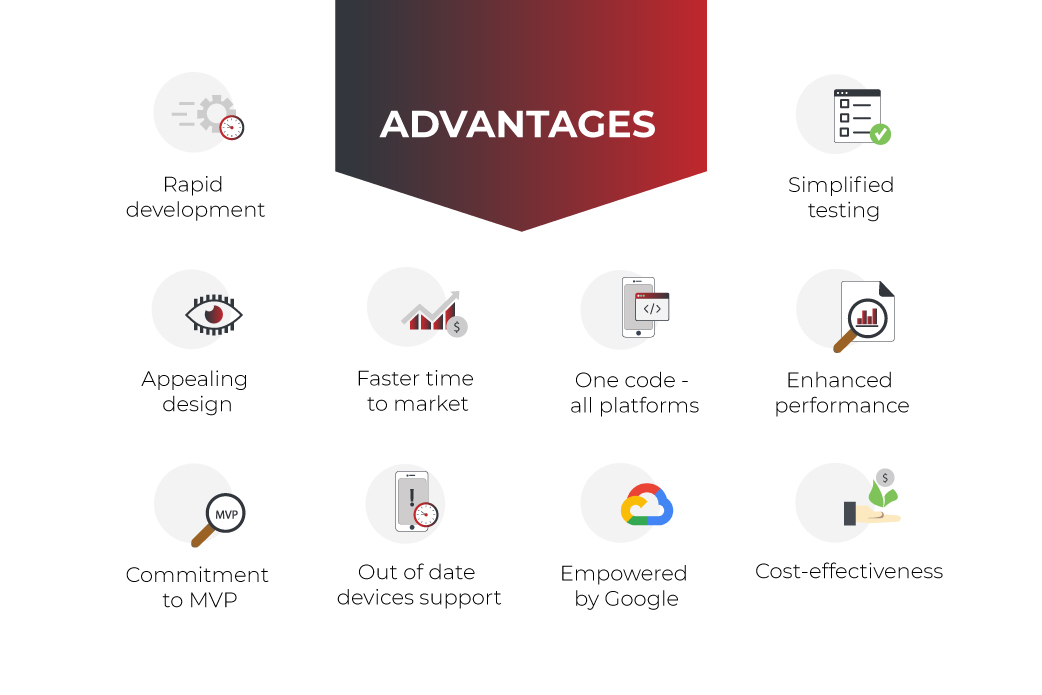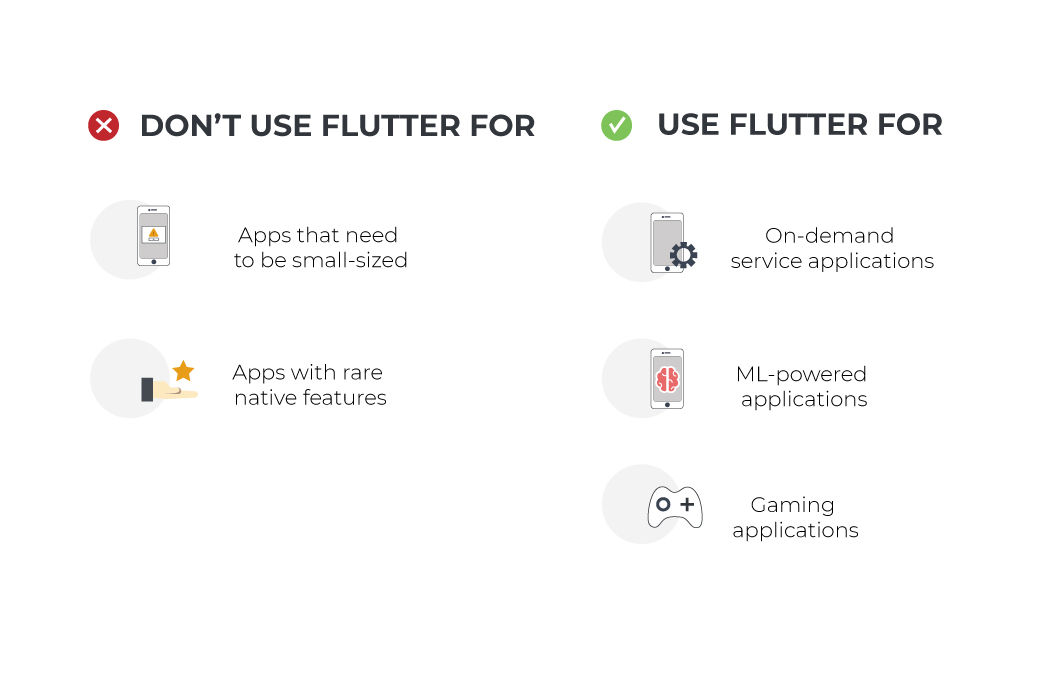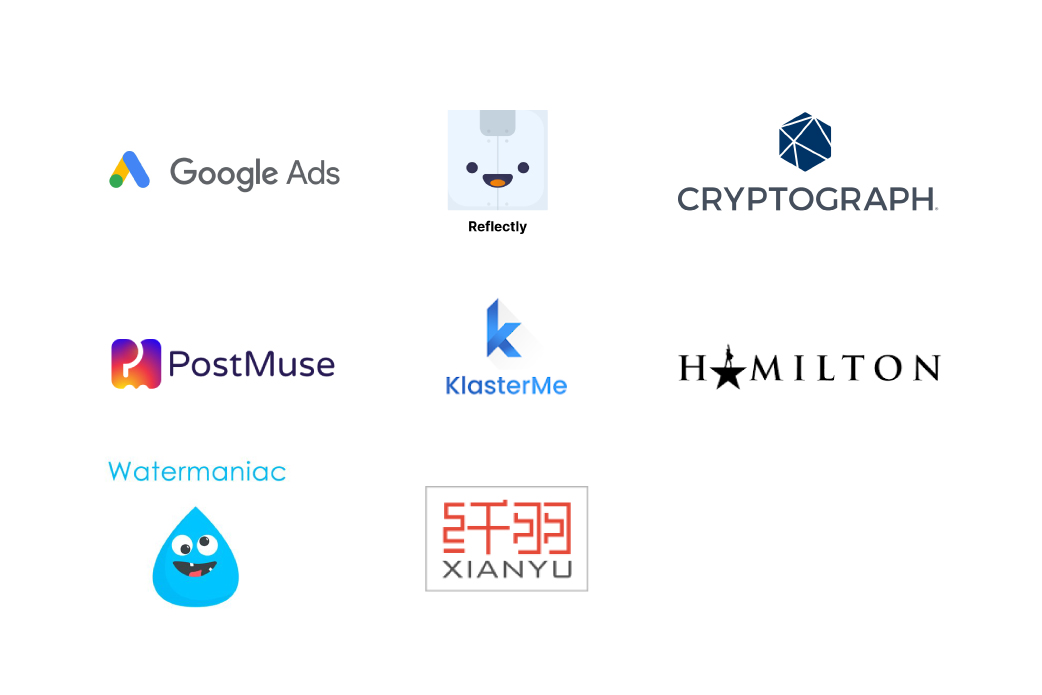Flutter app development: here’s why the toolkit is gaining momentum

Flutter – UI Software Development Toolkit for creating cross-platform solutions – is known among the industry not only for its widgets but also for the fact that this toolkit is gaining more and more popularity. So, according to data from Statista, Flutter’s popularity among developers has grown from 30% in 2019 to 42% in 2021, and this trend will continue to prevail. What makes Flutter, one of the newest cross-platform development solutions, so compelling? In this article, we will try to answer this question, along the way touching on the topic of the main advantages and disadvantages of Flutter app development.
What is Flutter: a glimpse into the recent past
Flutter has come a long way since its initial launch in May 2017. The year of 2019 can be safely called the moment of the greatest changes, when Google developers rolled out a new version of the toolkit – Flutter 1.12 – along with a novelized version of the programming language – Dart 2.3 – and an ability to create web applications. It is from 2019 that one can clearly trace the consistent growth of Flutter’s popularity, which we mentioned at the beginning of this article. But what exactly is Flutter?
It is worth starting with the fact that this is a software development toolkit developed by Google and geared towards creating mobile cross-platform applications. As we said above, since 2019, Flutter has also begun to cover the web application development segment. There is nothing surprising in the fact that this toolkit is systematically expanding its influence and attracting more and more followers, after all, the guys from Google are engaged in this.
It is customary to call Flutter a software development toolkit, not a mere framework, and there are objective reasons for this. By its structure, Flutter includes not only a framework, but also a huge number of UI (and not only) widgets, and other tools that serve to develop powerful, fast, and attractive applications.
At its core, Flutter uses Google’s Dart language. This is also one of the advantages of the toolkit, as the language is considered relatively easy to learn. Dart is an object-oriented language with an intuitive syntax so new developers can start developing their own Flutter apps soon enough.
Flutter is a free and open-source toolkit, and therefore the ever-growing community can supplement Flutter’s library of solutions and widgets with new tools. The toolkit’s internal engine provides support for a large number of unique widgets, both for creating UI elements and for working out the logic of Flutter software.
Finally, Flutter is often compared to other market representatives such as React Native or Xamarin, and this alone speaks volumes about how useful and popular this toolkit is. We will definitely compare all these technologies. Actually, we already did that in terms of Flutter vs React Native debate, check it out. For now, we suggest that you discuss in more detail what advantages and disadvantages are inherent in this toolkit.
Flutter advantages and disadvantages
Speaking about the attractive aspects of Flutter, it is worth mentioning that it has a number of advantages that can be found in other technologies like React Native or Vue. However, apart from these benefits, Flutter also has a number of pros that are unique even in the well-known cross-platform development industry. So in case, you’ve been wondering why Flutter is gaining momentum, here are ten reasons why.

Rapid development
One of the distinctive benefits of Flutter app development. Speed means everything in the modern world. When it comes to the mobile app industry, this axiom becomes even more pronounced. How quickly you and your team can turn an idea into a workable solution is one of the key success factors for the entire enterprise. The well-known Hot Reload feature allows Flutter developers to watch in real-time any changes they make to the code. A nice bonus is that the same feature works for UI designers who, in collaboration with developers, can watch the effect of their actions live. The bug fixing process is also accelerating.
This feature inserts all changes in the code into a running Dart Virtual Machine, which updates all classes in which any changes have been made. All this helps the framework to quickly rebuild all widgets and project the effect of changes on the developers’ and designers’ screens.
Simplified testing
The very essence of Flutter mobile app development means a simplified testing process that will require less effort. This is due to the fact that QA engineers can run automated test scripts of one code, which will display the operation of the application on several platforms at once. However, Flutter still has a lot to offer in this component.
In general, testing of Flutter applications consists of three main efforts – Unit Testing, Widget Testing, and Integration Testing.
Unit Testing is standard practice for testing a single function or class within a widget. These efforts help developers create more maintainable and stable code. A nice bonus is a fact that unit tests can be run directly from IDE, for example, VS Code, using built-in Flutter plugins.
In turn, the second type of testing checks the entire widget. Widget testing is responsible for the fact that the UI of the widget responds and looks only according to what types of requests are sent to it and nothing else. Such testing, of course, is a much more complex task and it will not work to launch the testing widget in the IDE plugin, since testers need a more sophisticated environment.
Integration testing is a usual practice that is responsible for a larger-scale test of the application logic as a whole. As part of such efforts, QA specialists roll out applications on real or virtual devices and check their operation.
One code – all platforms
Of course, the main advantage of cross-platform development is the fact that applications for different platforms can be created by one team of specialists. This significantly reduces cost and development cycle time. Consistent code across all platforms also reduces and simplifies bug fixing, testing, and maintenance. However, one code across all platforms is not a rule. If you need to make two different applications for two different platforms, Flutter will still be a good fit.
Enhanced performance
One of Flutter’s main features is its speed. This is why Google specialists and the community are constantly working to improve the performance of Flutter applications. Back in 2017, at the dawn of its existence, Flutter demonstrated more powerful performance in comparison with the main competitors in the face of React Native and Xamarin. The work done in 3 years is amazing – in some real cases, it was possible to achieve loading speed acceleration by more than 3.5 times. Today, Flutter is considered one of the best options if your goal is to maximize the performance of a multi-platform application.
Appealing design
One of the best benefits of Flutter. Speaking of design, one cannot but recall another Flutter feature, namely its widgets. They are a definitive part of the toolkit. In contrast to the more traditional approach of building layers, views, and more, using Flutter, the design process becomes easier thanks to ready-made widgets and object-based model building. Seriously, any background or dot on the Flutter app screen is a widget. At the same time, you aren’t limited in your imagination – widgets can be combined to build more complex designs.
However, there is one limitation still. The structure of the widgets organization is of a tree type, and therefore you need to think carefully about which combinations of widgets you are interested in before starting development. Ultimately, this widget-oriented approach greatly simplifies the process of building design for applications, especially when compared to native development in Objective C or Java.
Faster time to market
All of the above factors allow us to say one thing – development on Flutter accelerates time to market of the application. This is achieved by the very fact of cross-platform development, which allows you to create applications on multiple platforms at once. In addition, the simple nature of Dart’s syntax and the essence of Flutter as a framework allows writing less code, which also significantly speeds up the time to market of an app. As for design, thanks to the widget-based approach, there is no need to interact with the native elements of the platforms for which you create applications, which also speeds up the development process.
Empowered by Google
There is no doubt that a company like Google will invest a lot of resources in maintaining and developing its technology. Flutter is used in many Google products, and therefore we can say with confidence that Flutter will definitely stay with us in the future. With the release of Flutter 2.5 and Dart 2.14, the capabilities and performance of the toolkit have increased significantly and there are no signs that such development will not continue in the future.
Cost-effectiveness
The very idea of cross-platform development was conceived as a more cost-effective effort. Flutter application development takes this paradigm to a new level due to fewer demands on the written code, faster design creation, and the presence of a large community that offers ready-made solutions.
Commitment to Startups and MVP
All of the above factors make Flutter an ideal option for a business that is at the Startup stage or is trying to test its concept through an MVP. The essence of the MVP launch is to create a minimum viable product as quickly and at the lowest cost as possible. The product must have the main feature of the application, must be useful, and must have the ability to check the viability of the concept in a real market and competition. Flutter features the best tools for this task.
Out of date devices aren’t a problem
One of the distinctive benefits of Flutter app development. Completing the list of Flutter pros and cons, we have to declare that Flutter apps will look just as good on older versions of the OS as they do on the newest ones. This significantly improves the User Experience, since not all users employ the latest versions of operating systems on their devices. But even more, this feature makes life easier for developers, as it saves them unnecessary work and time while reducing the overall cost of developing an application.
Flutter drawbacks
Despite all of the advantages of using Flutter, it isn’t perfect. Every technology, framework, or toolkit has its own strengths and weaknesses, and Flutter is no exception.
Large-sized applications. The very same widgets that bring so much value and make it easier to create Flutter apps are one of the main drawbacks of the toolkit. Because of them, the size of the final applications turns out to be larger than that of native or concurrent applications from a multi-platform development environment. The large size of the application forces users to spend more time updating or downloading applications.
Poor set of libraries. Flutter’s novelty and freshness are both an advantage and a disadvantage. Due to its novelty, Flutter has not yet acquired a large number of tools, libraries, and ready-made solutions, so developers experience certain limitations when working with this toolkit. At the same time, it is important to clarify that all these limitations can be circumvented if the developer has sufficient experience in developing on Flutter.
Insufficient support. Flutter community is large enough and growing rapidly, but it is still difficult to compare it with that of, for example, React Native. This creates some problems in terms of support and finding answers to questions. Flutter Git and Stack Overflow threads are a good place to find support, as is the main site, but it may not be enough.

What is Flutter best suited for?
Of course, there are no perfect solutions and Flutter is no exception. Some technologies are better suited for certain tasks, while others are more often used for others. Flutter is quite versatile, but the set of its advantages and disadvantages nevertheless determines its quite fair distribution for certain tasks, namely:
On-demand service applications. Flutter application performance and convenient & fast design allow this toolkit to take the leading place in the list of the best technologies for the production of On-Demand service applications. Such applications serve to connect users with representatives of a wide variety of services through a mobile application, be it a taxi, grocery delivery, or anything else. It is worth saying that in the context of the Covid-19 pandemic and the lockdown, such applications received a large influx of popularity and investment, which in turn had an effect on the popularity of Flutter in the 2020-2021 period.
ML-powered applications. Flutter is ideal for creating applications that will utilize Machine Learning power. Speaking of such applications, you can recall, for example, Image or Face recognition apps. Flutter achieves leadership in this segment of mobile applications thanks to the presence of a special Machine Learning plugin – firebase_ml_vision 0.9.7 – the installation of which won’t cause problems even for not the most experienced developers. Machine Learning is a prevailing trend in the mobile application industry, and therefore Flutter rightfully gets its portion of demand.
Gaming applications. Everything is clear here: in view of the fact that Flutter allows you to achieve greater performance and speed, it is ideal for the segment of gaming applications, since these two parameters are key in this matter. Also, don’t forget about the beautiful design that you can create thanks to Flutter widgets.

However, Flutter app development limitations force us to mention some cases when choosing in favor of this toolkit would not be entirely appropriate. Important note: you can still use Flutter to create applications, which we will outline below. We just want to clarify that it may not be the best choice for solving such problems.
Apps that need to be small. Above, we said that one of Flutter’s drawbacks is that applications are too bulky. Of course, everything here depends on the specifics and set of features of a particular application. However, you should consider carefully whether to get involved in development with Flutter with a small application as your goal.
Apps with rare features. The lack of ready-made solutions and libraries inside Flutter causes quite specific difficulties. In a situation where your application must have some kind of unique, native-only features, you are unlikely to be able to find a replacement for such a component in the Flutter lists of libraries and tools. In such a situation, developers will have to spend additional time creating connectors between the application and native components, which will seriously slow down the development process.
Flutter app examples
Yes, despite the fact that Flutter is a relatively new kid on a block compared to more longstanding frameworks like React Native, this toolkit already boasts a solid list of successful applications, which we present for you in the image below. Here are the best Flutter apps on the market.

To sum up
Flutter certainly has good prospects in the context of the near future and it is extremely interesting to follow the development of this toolkit. Being maintained and constantly updated by experts from Google, the toolkit attracts more and more followers, which also leads to an expansion of the range of its use. The adaptability and high performance, as well as the possibilities offered by UI widgets, make Flutter app development services more popular.
FLUTTER VS REACT NATIVE
FAQ
Of course, it is. Flutter’s set of advantages, ranging from high performance to UI widgets, allows specialists to create the most demanding and complex multi-platform applications in a much shorter time than in the case of native development.
Yes and no. One of Flutter’s drawbacks is the heavy weight of the final applications. Large projects may require an even larger set of features and then such an application will turn out to be too cumbersome. On the other hand, Flutter tools allow you to create the most complex and large applications, and therefore whether it is worth using Flutter for such large projects is a question that requires additional parameters.
First of all, Flutter is used to create Gaming, ML-powered, and On-Demand multi-platform applications. However, these are only basic cases, while the toolkit allows you to create virtually any application (even Progressive Web apps and Desktop apps), with rare exceptions.
No, Flutter is a technology or a toolkit, call it what you want, which consists of a number of tools. Nevertheless, Dart is used in Flutter – a programming language created by Google specifically for this toolkit.
Build your ideal
software today


